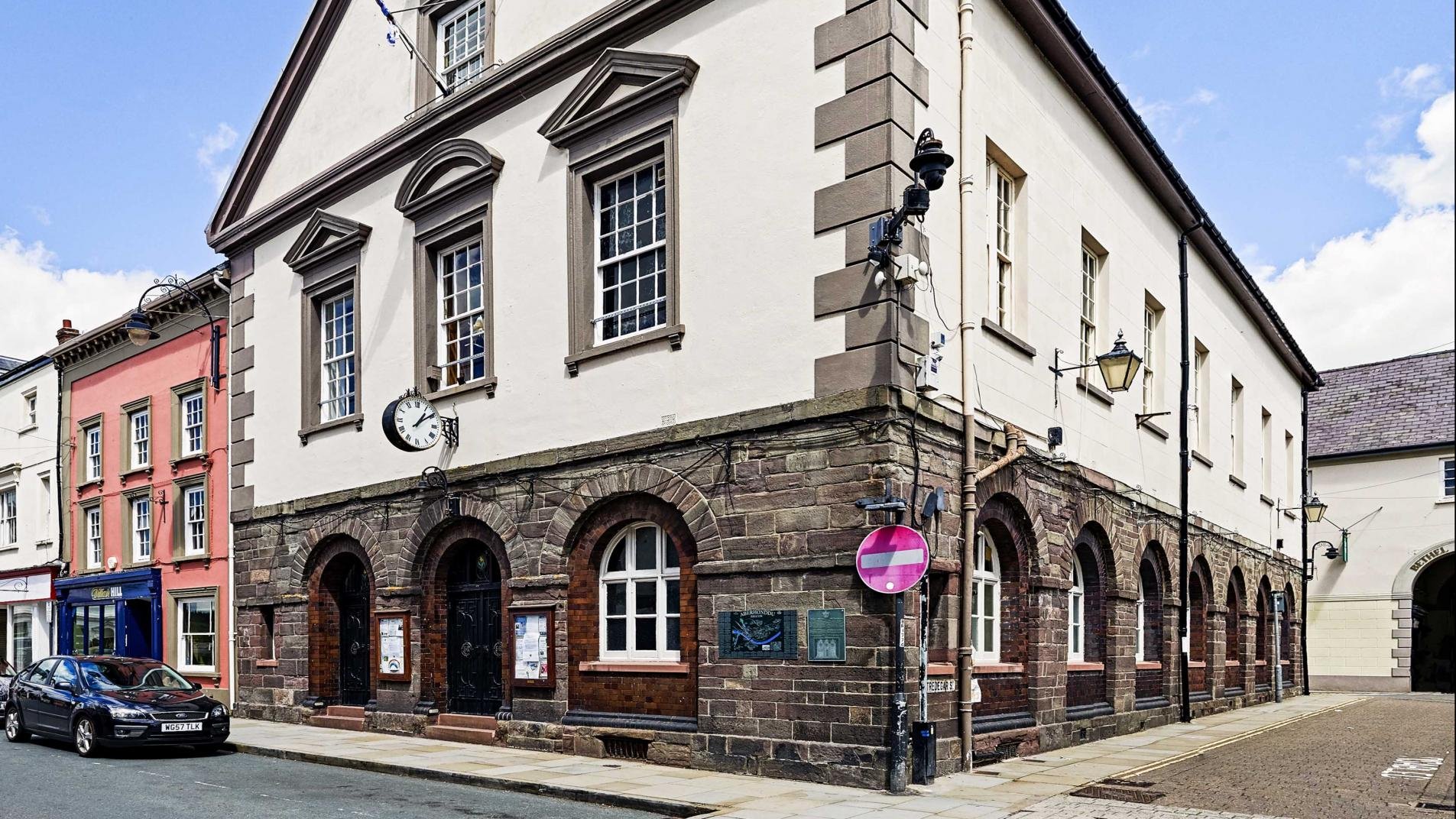
Walk: The Brecon Story - Section 1
The Guildhall & Brecon High Street
Visit historic buildings in High Street Inferior and Brecon Guildhall, home of Brecon Town Council. This is the 1st stop in WALK: The Brecon Story, our heritage trail around Brecon.
The Guildhall
Stand in front of our historic Guildhall (Plaque 1) and know that you are at the heart of The Brecon Story. We are a town with a recorded history stretching back nearly a thousand years. Norman invaders conquered the lordship of Brycheiniog around 1093. They built a castle here at the meeting point of the rivers Usk and Honddu (hence the Welsh name, Aberhonddu - or mouth of the River Honddu) and, in its shadow, a town or borough gradually grew.
A Welsh army lay siege to Brecon in 1217 and returned to burn it down in 1231. The street pattern you see today, including the spot where you are standing, reflects in part the re-building that took place in the thirteenth century.
A picture of the first town hall, erected on this site in 1624, can be seen on the front of the Guildhall. This was replaced by the present building in 1770 with further changes in 1888 costing £3,000. These last changes saw the once open arches around the building bricked in and windows added. A cellar at one stage housed merchants’ wares with a market on the ground floor also housing ‘stocks’ for the punishment of minor criminals. But in 1876 it was said to be “little used for commercial transactions, the farmers preferring to do business at the principle inns.” Upstairs have been, at different times, council offices, courts and a theatre space. The top floor even housed a military store with gunpowder at one point - a worry for those living and working nearby.
High Street
Directly across the road from the Guildhall, at 51 High St, is the birthplace in 1747 of Thomas Coke, who later co-founded the Methodist Church in America and became its first Bishop (Plaque 2 - stone, with a blue plaque at the back of the building). He was educated at Christ College, Brecon and Jesus College Oxford and in 1772 became the mayor of the town.
Looking up the High Street, in the direction of the oncoming traffic, on the left, we have the Sarah Siddon’s pub, formerly the Shoulder of Mutton (plaque 3 - stone). It’s named after one of the most famous actresses of the eighteenth century - who was born here in 1755. At the peak of her career she earned up to £5,000 a year, a huge amount at the time, and even gave private readings for the King and Queen.
Next door, at 46 High Street Inferior, a plaque notes the date 1589 (plaque 4)- possibly referring to the building of the main part of this house which dates to the late late 16th or 17th century.. The front itself was remodelled in the late 18th or early 19th century with the date plaque only appearing above the door in the early 20th century. The exceptional shop front features ’a central wood doorcase with fluted Corinthian columns, semi circular headed windows eitherside with keystones, enriched dentil entablature overall with fluted Corinthian palisters’, according to the Grade II* listing for the building. The corinthian columns continue inside with an intriguing blocked up stone doorway seeming to head next door into the Sarah Siddons pub.
Across the road, was a Brecon bank that helped finance the development of the South Wales iron industry. Wilkin’s Bank or simply ‘The Old Bank’ (plaque 5) (now a branch of Lloyds) was founded in 1778. It printed its own bank notes and paid the wages of thousands of workmen across the South Wales Valleys. It also bankrolled the iron masters. It helped fund railways and canals and even had shares in ships sailing out of Llanelli.
Turning back down the High Street, the ornate columns of the HSBC Bank were built in 1913 on the eve of World War One. Originally the Midland Bank, masons from quarries at Cefncoedycymmer near Merthyr were involved in shaping the beautiful stone detail. It replaced the Victoria Inn, the road alongside being called Victoria Lane until that was renamed Tredegar Street, Brecon. The name recalls the Morgans of Tredegar who owned much land around the town as well as Tredegar House, their ancestral home near Newport and some 40,000 acres across three counties.
The Guildhall is part of our WALK: The Brecon Story heritage trail.
Click here to access the Google Earth map or visit the next place on our trail

